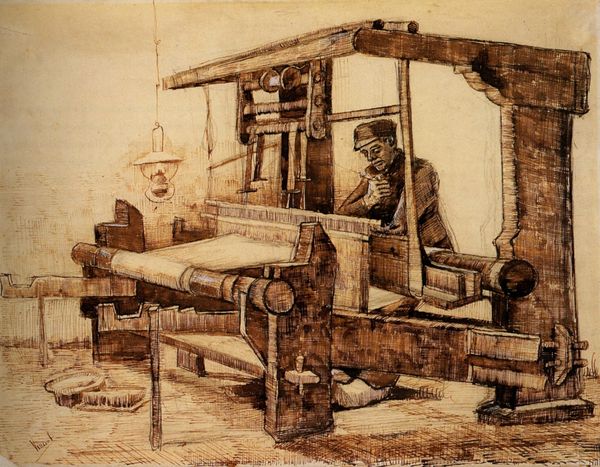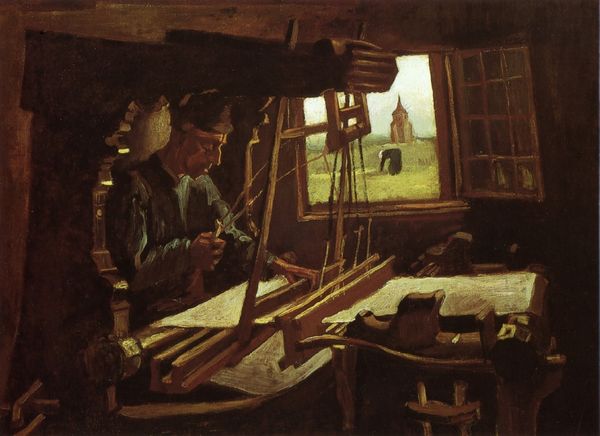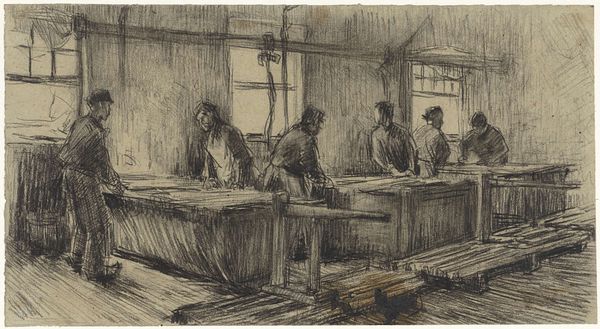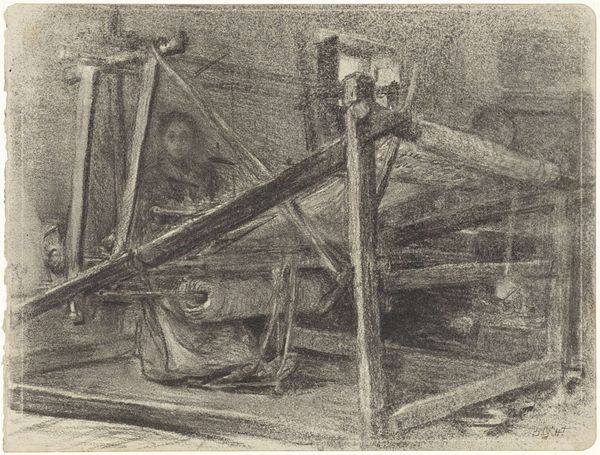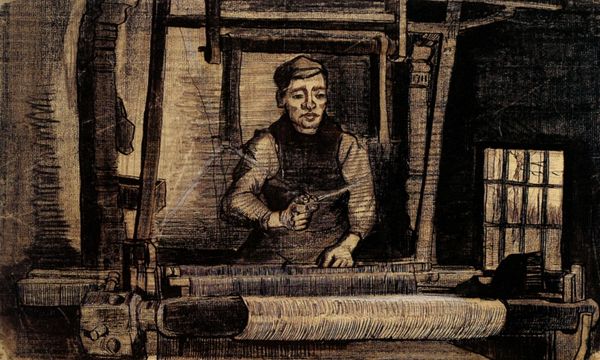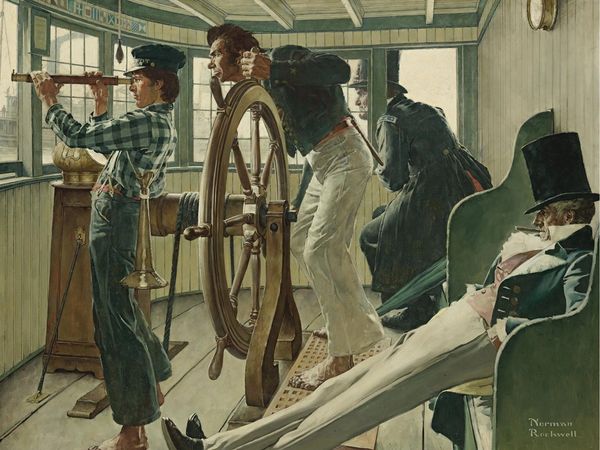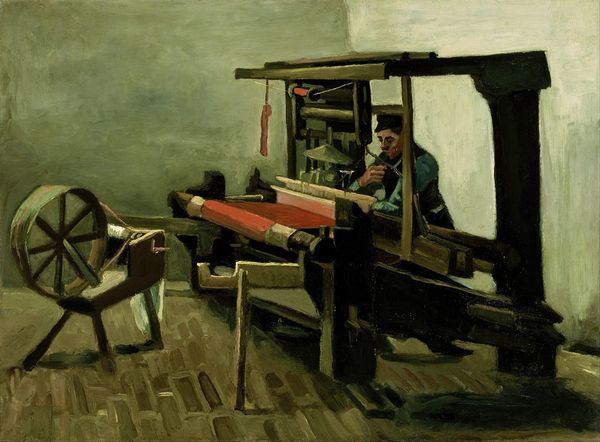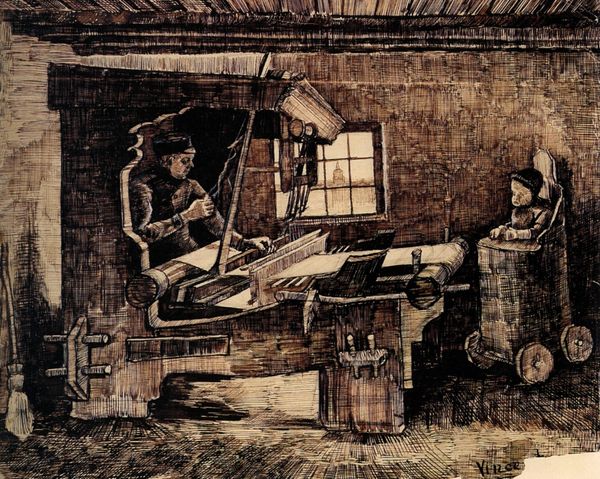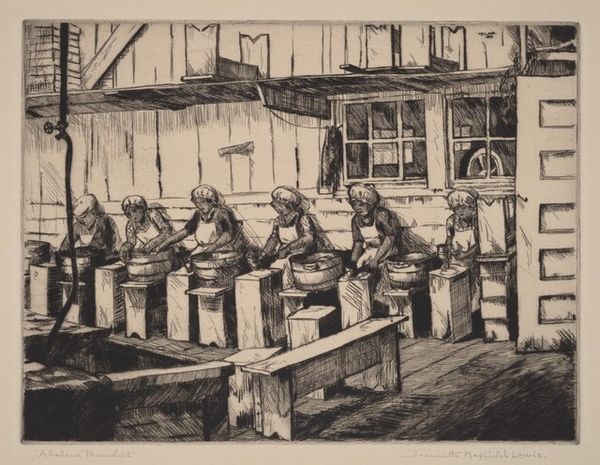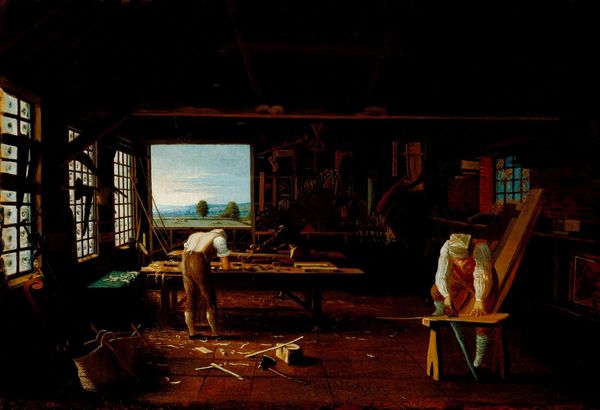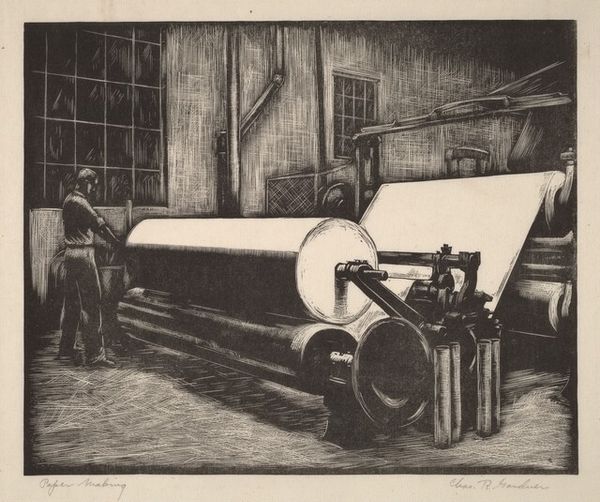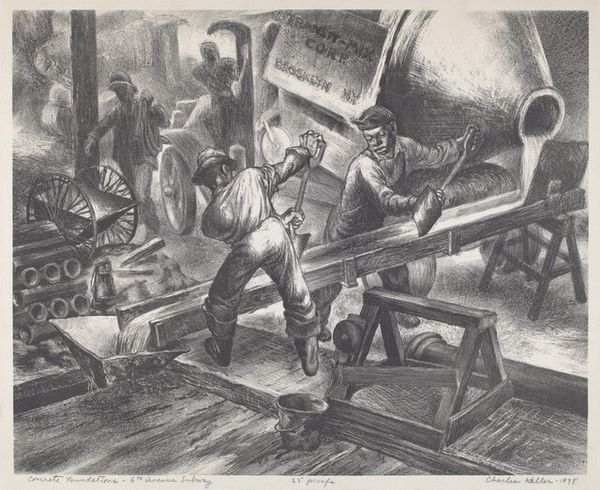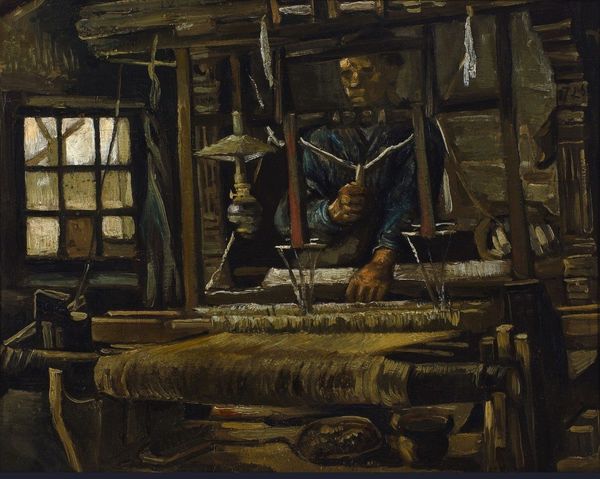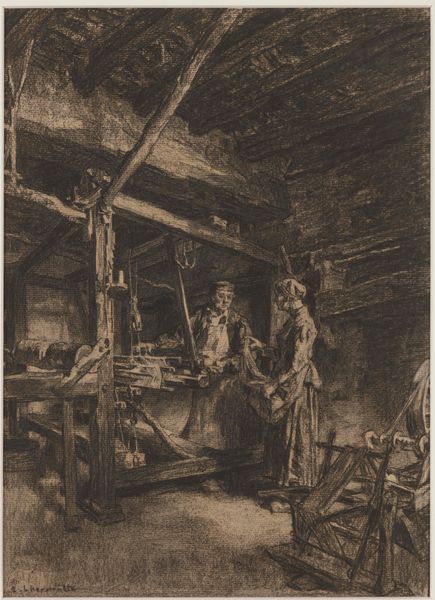
painting, oil-paint
#
portrait
#
painting
#
impressionism
#
oil-paint
#
sculpture
#
landscape
#
men
#
genre-painting
#
post-impressionism
#
realism
Copyright: Public domain
Editor: Here we have Vincent van Gogh's "Weaver, Seen from the Front," an oil on canvas completed in 1884. I find myself immediately drawn to the almost overwhelming presence of the loom itself, dominating the composition and the weaver both. What are your initial thoughts about this work? Curator: It's essential to consider this painting through the lens of labor and materiality. The hulking loom isn't merely a backdrop; it *is* the subject. Van Gogh meticulously renders its complex mechanics, drawing attention to the means of textile production. What does the depiction of such a large machine tell us about the context in which this was made? Editor: Well, the scale emphasizes the labor involved, the sheer physical effort required for weaving. It almost dwarfs the weaver. Is that his point, do you think? Curator: Precisely! Van Gogh is documenting and, in a way, critiquing the social realities of the working class. The materiality of the loom—the wood, the metal—speaks to industrialization, but also to the pre-industrial craft being practiced. Consider the oil paint itself, applied with visible brushstrokes; isn't Van Gogh also showing his own labor, mirroring that of the weaver? Editor: That's an interesting point; both are involved in the creation of something, one fabric, the other art. It blurs the lines a bit. Curator: Exactly. By focusing on the process and materials, Van Gogh elevates the craft of weaving, questioning the traditional art hierarchy that separates "high" art from "low" craft and asking us to think about value. Editor: I never thought of it that way, as a commentary on labor itself and how art and craft relate to that. It certainly reframes how I see the piece now. Curator: Indeed, paying attention to materials and the process of making can open new avenues of interpretation and understanding when we examine any artwork.
Comments
No comments
Be the first to comment and join the conversation on the ultimate creative platform.
